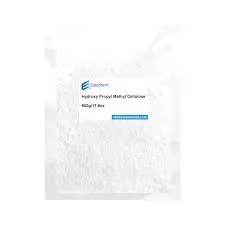
Jul . 29, 2024 05:40 Back to list
Understanding the Structural Characteristics and Applications of Hydroxyethyl Cellulose in Various Industries
Understanding the Structure and Applications of Hydroxyethyl Cellulose (HEC)
Hydroxyethyl cellulose (HEC) is a non-ionic, water-soluble derivative of cellulose, a natural polymer derived from plant cell walls. As a modified cellulose compound, HEC possesses unique physical and chemical properties that make it invaluable in a variety of industrial and consumer applications. Understanding the structure of HEC not only elucidates its functionality but also provides insights into its wide-ranging uses.
Chemical Structure of Hydroxyethyl Cellulose
The fundamental structure of HEC begins with cellulose, which consists of a linear chain of glucose units linked by β-1,4-glycosidic bonds. In the case of HEC, hydroxyethyl groups (-O-CH2-CH2-OH) are introduced into the cellulose structure through a process known as etherification. The degree of substitution, which reflects the average number of hydroxyethyl groups replaced per glucose unit, plays a critical role in determining the properties of HEC.
The hydroxyethyl groups enhance the solubility of HEC in cold and hot water, a trait that pure cellulose does not exhibit due to its extensive hydrogen bonding and crystallinity
. The introduction of these groups disrupts the crystalline structure of the cellulose, leading to a significant improvement in the polymer’s hydrophilicity.Physical Properties
HEC appears as a white or off-white powder that is odorless and tasteless. Upon dissolution in water, it forms a viscous colloidal solution. The concentration of HEC in the solution can significantly affect its viscosity. Typically, higher concentrations lead to greater viscosity. A striking characteristic of HEC is its pseudoplastic behavior, where its viscosity decreases under shear stress, making it easier to process in applications where it is subjected to mechanical forces.
Additionally, HEC is thermally stable and exhibits good resistance to a wide range of pH values and electrolytes, making it suitable for various formulations. Its ability to form gels and films contributes to its popularity in numerous industries, ranging from personal care to food production.
hydroxyethyl cellulose structure

Applications of Hydroxyethyl Cellulose
One of the most prominent applications of HEC is in the cosmetic and personal care industry. It serves as a thickening agent, stabilizer, and emulsifier in products such as shampoos, lotions, and creams. Its ability to provide a smooth texture and enhance the viscosity of formulations ensures that products are both aesthetically pleasing and effective.
In the construction industry, HEC is often utilized in cement-based solutions and adhesives. It improves workability, water retention, and prevents cracking. The ability to maintain moisture within plaster, mortar, and concrete products enhances their performance and longevity.
HEC is also found in the pharmaceutical industry, where it functions as a binder and thickening agent in various drug formulations. Its biocompatibility and non-toxic nature make it suitable for applications involving direct contact with biological systems. Additionally, HEC can be used in controlled drug release systems, where its gel-forming capabilities regulate the release of active pharmaceutical ingredients over time.
Furthermore, HEC is employed in the food industry as a food additive. Its thickening and gelling properties can enhance food texture and stability in products like sauces, dressings, and dairy items. Being a plant-derived polymer, it meets the rising consumer demand for natural and clean-label ingredients.
Conclusion
The structural characteristics of hydroxyethyl cellulose play a key role in defining its physicochemical properties and diverse applications. As a natural polymer modified to enhance its functionalities, HEC has established itself as an essential ingredient across multiple sectors. Its versatility, combined with an increasing focus on sustainable and safe materials, will likely continue to drive innovation and expand its usage in the future. As research advances, new formulations and applications of this valuable compound will undoubtedly emerge, reinforcing the relevance of hydroxyethyl cellulose in modern industries.
-
Versatile Hpmc Uses in Different Industries
NewsJun.19,2025
-
Redispersible Powder's Role in Enhancing Durability of Construction Products
NewsJun.19,2025
-
Hydroxyethyl Cellulose Applications Driving Green Industrial Processes
NewsJun.19,2025
-
Exploring Different Redispersible Polymer Powder
NewsJun.19,2025
-
Choosing the Right Mortar Bonding Agent
NewsJun.19,2025
-
Applications and Significance of China Hpmc in Modern Industries
NewsJun.19,2025







